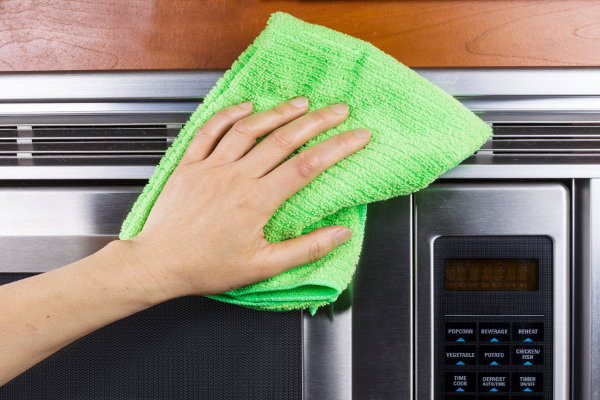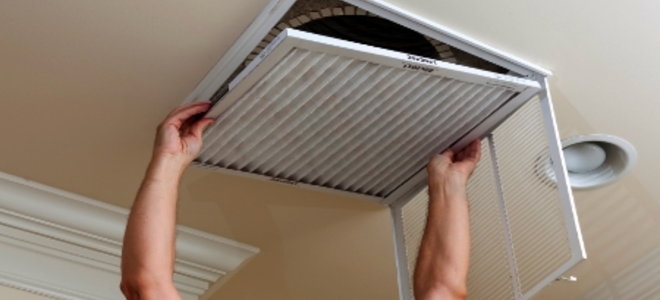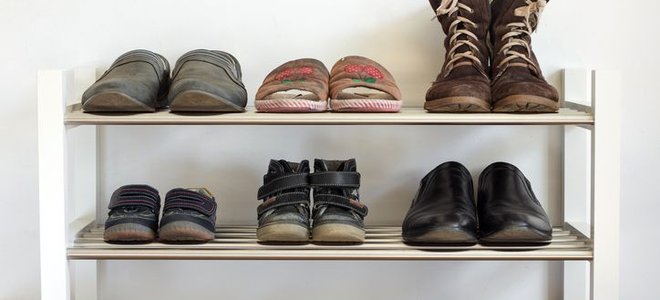Preparing for the holidays can be time-consuming and stressful, especially if you are hosting in your home. We all want to have successful gatherings with great food, the perfect gifts, and a sparkling clean house. You shop, cook, and clean in advance, but you are living in your home so last-minute cleaning is also a necessity. Unfortunately, no amount of spritzing and spaying to freshen your home will tackle the real culprit: the unwanted guests better known as dust and odors.
Airborne particles such as dust, dust mite waste, pet dander, and even skin cells are present in every home and collect on surfaces. Static electricity attracts these particles to each other, causing them to form clusters commonly referred to as dust bunnies. Traffic patterns within the home can also cause these formations to collect in hard-to-reach nooks and crannies.
Outsmart Dust When Cleaning

Traditional dusters, especially those made from feathers, can actually aerosolize dust instead of capturing it. By dusting with feathers, the dust spreads from one surface to another, leading to recontamination of your indoor air. I recommend dusting with a damp cloth or one made from microfiber to grab and hold onto the dust more effectively. To prevent recontamination and the spreading of dust throughout your home, microfiber cloths should be washed after every three uses.
Heavier fabrics like draperies, bedding, and area rugs also tend to collect dust. It’s best to clean these heavy fabrics outside to prevent dust from becoming airborne again in the home. At least once a month, take the items outside and hang them over a fence or clothesline to let them air out. If weather does not permit or if the pollen levels are too high, I suggest using the brush extension on a vacuum with HEPA filters.
Clear the Air

Dust is most visible to the human eye when it settles on surfaces, but what many people don’t realize is that most dust particles are actually floating around in the air. Most dust particles are so small that they aren’t visible when they’re airborne. If you’ve ever looked at the sunshine coming through a window, you may have noticed some of the larger dust particles floating in the air. You may have even tried to move away from the sunlight to keep from inhaling those particles. Unfortunately, moving away from the sunlight will not keep you from breathing them in—the particles exist everywhere.
There are a few helpful tricks you can follow to minimize the presence of dust in your indoor air. Clean or replace your HVAC filter regularly. The HVAC filter traps airborne particles, preventing them from entering air filters and being blown back into the house. A poorly maintained filter can lead to higher concentrations of dust in the home or inadequate air circulation. I suggest checking your air filters in the autumn and spring. Depending on buildup, you can then determine whether replacement or cleaning is necessary.
Placing a portable air purifier in heavily trafficked rooms such as the living room and bedroom helps reduce the presence of dust. I especially recommend an air purifier if you’re a pet owner as the problem can be exasperated if pets are in the room. Air purifiers such as Febreze Air Purifiers have dual-action filters that can capture up to 99% of airborne particles like dust, pollen, dust mite waste, pet dander, fur, and other allergens that pass through the filters before they settle in a home, helping to reduce surface dust collection over time. The air purifier also has a carbon pre-filter that helps reduce unwanted odors, which can be particularly helpful near a litter box or pet bed. The fresh Febreze scent can then be added back into the filtered air for a cleaner and fresher home.
Housekeeping Tips

Set a reminder on your phone to follow a routine for cleaning in your home. You might be surprised to find out how infrequently some Americans take on basic cleaning practices in their home. In fact, when it comes to vacuuming, six in 10 respondents from a recent Febreze Air Purifiers survey admitted that they spend less than three hours vacuuming per month. Depending on usage, certain rooms may need to be cleaned more frequently. For bedrooms, I suggest weekly cleaning to minimize build-up and the opportunity for dust to get stirred up and released back into the air. Hard-to-reach places like under the bed and closet corners quickly collect dust particles, feathers from down bedding, and hair and skin cells, creating dust bunnies. Receiving a weekly reminder may help make the dust bunny battle more manageable.
Set firm housekeeping rules. Cleaning your home does not need to be a tiresome task if you stay ahead of it. There are a few rules you can follow in order to lessen cleaning time. Shoes drag in all sorts of debris from the outdoors. Enforce a “no shoes” policy in your home by placing either a shoe rack or mat by your front door for people to place their shoes. If you’re a pet owner, you’re most likely familiar with your pet rolling around in something outside that they then decide to shake off as soon as they get inside. This means that not only is pet dander an issue for your indoor air, but also debris from the outdoors including pesticides and other particle bound chemicals. Keep your pet’s bedding, toys, and other belongings in one area of the home that you won’t mind frequently cleaning. Confining items that you know will be a constant source of dust, dirt, and odors to one area will allow you to do quick and concentrated touch-ups.

